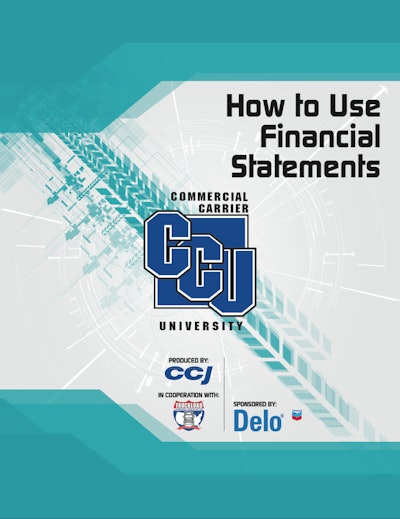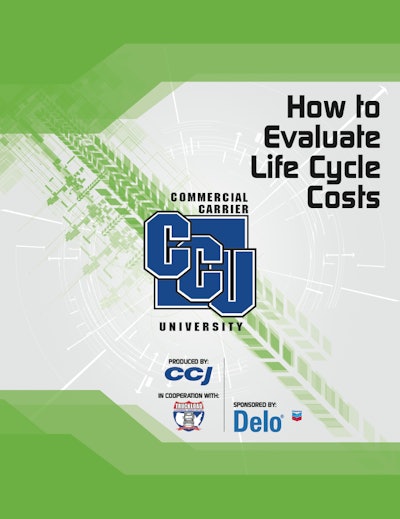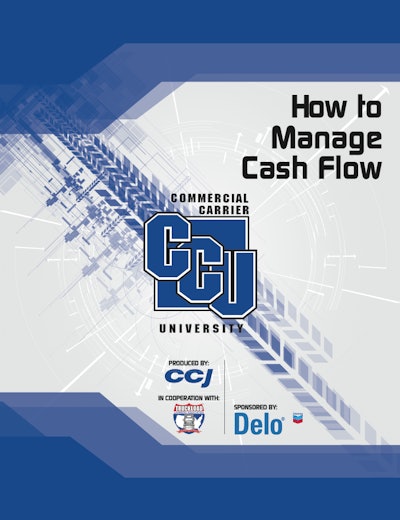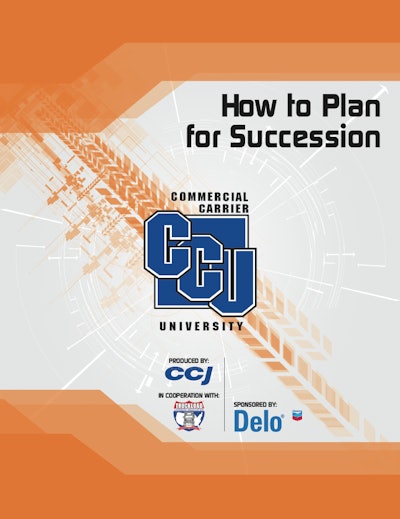To order a USB drive with all five manuals or purchase a digital download of individual manuals visit www.etruckerstore.com.
How to Use Financial Statements
Running a successful trucking company is hard enough without having to learn how to read financial reports, right? That’s a job 
Yet many fleet owners do just that with their biggest investments — their businesses. Just as gauges tell you the operating condition of your trucks, financial reports gauge the financial and operating condition of your company. Ignore these indicators and you’ll likely hear some gears grinding as bankers or creditors call you in for some emergency maintenance. For a new driver, the dashboard instruments may seem impossible to learn. But in time, a driver learns what each indicator says about the tractor and what the “safe” operating ranges are for each system. It takes only a willingness to learn and an appreciation for the importance of each control or instrument. Financial statements need not be mysterious or incomprehensible. Each tells a story about a different part of your business. Collectively, they give an overall picture of the financial health of your company. Learn what information each tells — and, just as important, doesn’t tell — and you’ll be in a better position to make your company financially healthy for a long time.
How to Evaluate Life Cycle Costs
Determining the right time to replace a vehicle is one of the most important decisions in running a successful and profitable 
This comparison will help you determine when you should replace a vehicle, although economic priorities may prevent replacing a vehicle when life-cycle costing dictates. Ideally, however, vehicle replacement should coincide with the life-cycle cost determination. Some situations require you to accelerate vehicle replacement, of course — deteriorated vehicle condition, accident damage or changes in the operating environment. No replacement policy will apply to every truck or trailer.
A life-cycle costing formula is just that — a formula. By analyzing trends, it provides a yardstick that is subject to change with the economic uncertainties of the marketplace and operating demands of your company. Most trucking companies have a vehicle replacement policy defined in terms of miles, years or both. Such policies evolve through experience, instinct, cost analysis and personal preferences. They provide the basis for an annual fleet review that identifies the vehicles meeting these criteria and lists them in descending order of age or mileage.
How to Write A Business Plan
A business plan is the document lenders want to see when you are starting your company or when you want money to expand it
Perhaps not, but business partners want to see that you take your business seriously, that you aren’t just trucking by the seat of your pants. And it’s not just outsiders who need a business plan. You need a plan to confirm that your strategy is viable. And, though it’s unpleasant to consider, a written business plan is one of the resources you could leave a successor in the event you die or become incapacitated.
What’s in a plan? Designs vary, but all plans generally describe the business — why it exists, what it does, where it operates, how it finds customers, who its competitors are and who runs it. Business plans also show where the company is going and how it plans to get there. They show whether the company is profitable now and whether it’s likely to remain profitable. And they discuss management’s experience and past performance.
How to Manage Cash Flow
Every business owner worries about cash flow, and it’s a particular concern in trucking. Given tight rates, fluctuating fuel prices, 
Nothing brings the cash crunch closer to home than tax time. You struggle all year to accumulate something, only to have your silent partner, Uncle Sam, take a huge bite. You might have virtually no cash, yet your accountant proclaims that you’re wealthier than ever and owe a huge tax payment. Is he incompetent or just crazy? Once you understand the mysteries of cash flow management, you’ll see that he’s neither. What’s the secret? Is it cost control? Is it finding the right financing method? The right mix of customers? Tight company policies? Slower growth? More help from your banker? It’s all these things – and a lot more.
How to Plan for Succession
Succession planning differs from other types of business planning in that it doesn’t try to predict the future. Instead, a solid succession plan is based on the acceptance that you don’t know what will happen but that you will be prepared anyway. Experts say that more than 40 percent of family-owned businesses will experience a change in ownership in any five-year period.
Of those, only 4 percent have a formal succession plan.

While not solely due to lack of succession planning, the dismal rate of family-owned business failure can largely be attributed to not being able to successfully pass the business on to the next generation. One way or another, you will leave your business one day. Without a formal succession plan, your business may not provide for the retirement you want, retain its value for your heirs, continue on successfully as you had envisioned
The bottom line: The absence of a succession plan is the willful destruction of your trucking company.